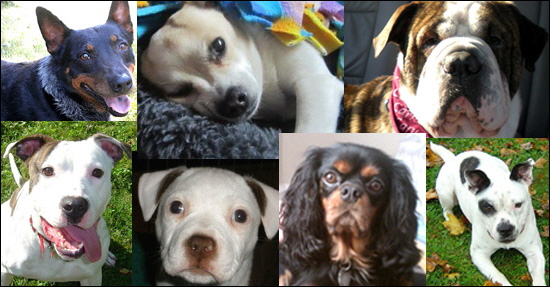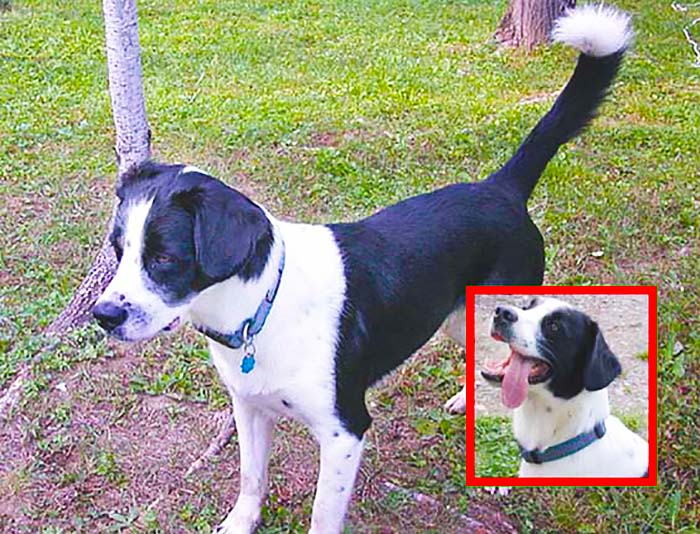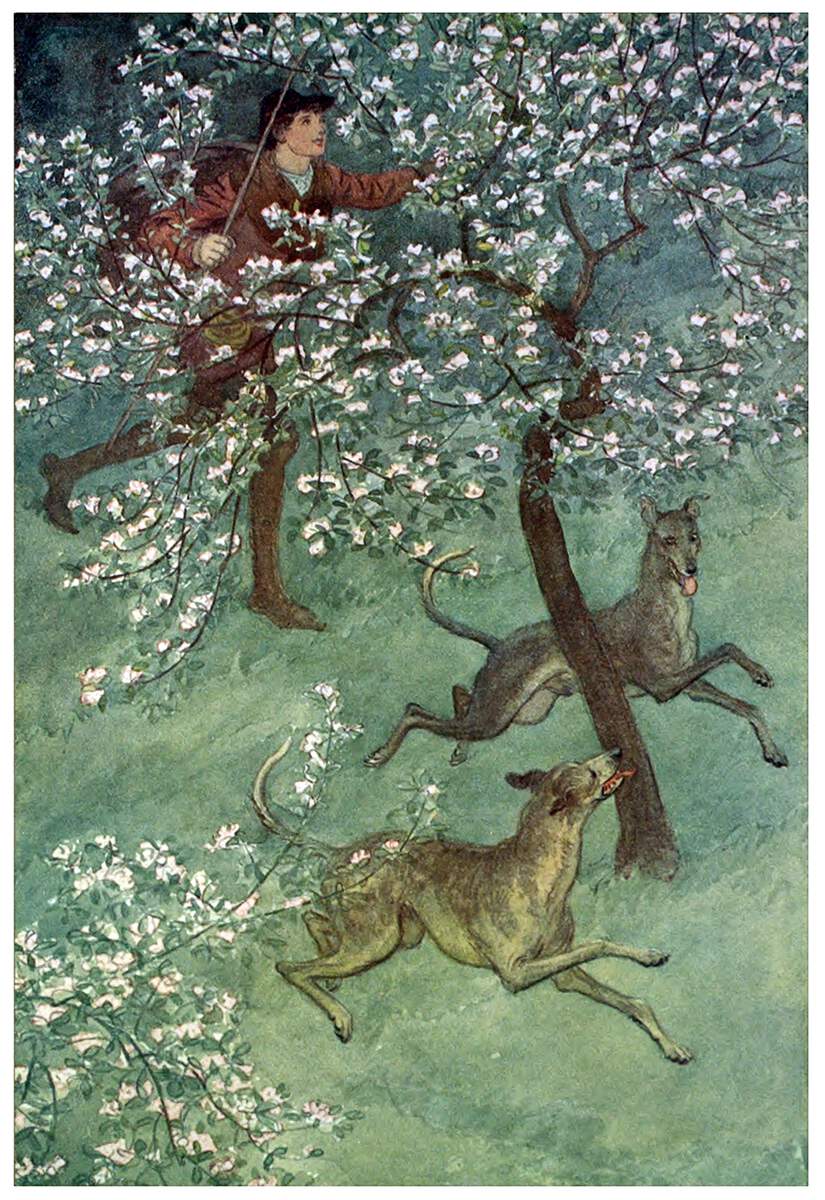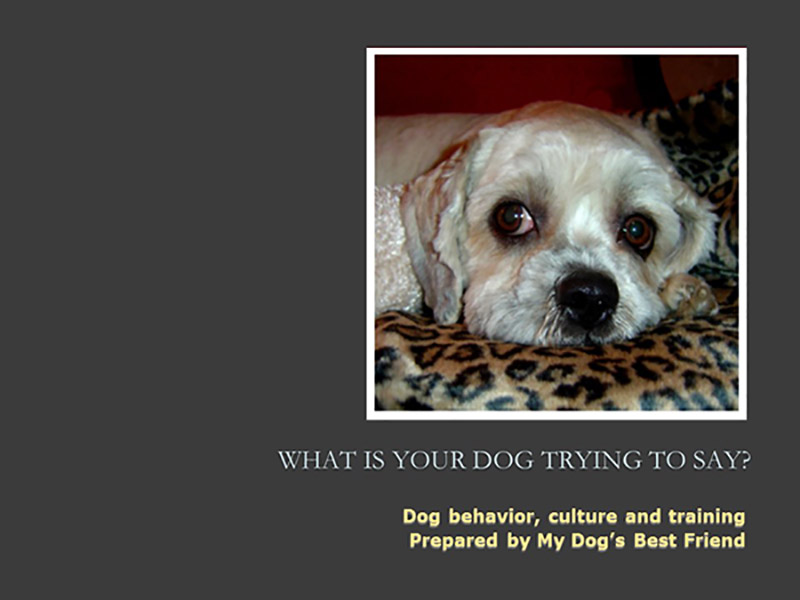

LEARN
Dr. Ian Dunbar's TED Talk: Dog Friendly Dog Training | click + to open
Dr. Ian Dunbar’s TED Talk: Dog Friendly Dog Training
“Ian Dunbar is a veterinarian, animal behaviorist, and dog trainer who received his veterinary degree and a Special Honors degree in Physiology & Biochemistry from the Royal Veterinary College (London University) plus a doctorate in animal behavior from the Psychology Department at UC Berkeley, where he researched the development of social hierarchies and aggression in domestic dogs.” For more info, visit Dr. Dunbar’s Wikipedia bio.
Also visit Dog Star Daily where you will find a wealth of articles, videos and podcasts from many of the top dog trainers and animal behavior experts, including Dr. Ian Dunbar.
Steve White: Dogs that want to work | click + to open
Steve White: Dogs that want to work
Sgt. Steve White from the Seattle Canine Police Unit is another well-known dog trainer who has found a better way to do what he does. Like many of today’s most respected dog trainers, Sgt. Steve White started his dog training career using “traditional dog training methods” but he once met a dog that pushed him to find an alternative.
During one of Steve White’s tracking and training seminars at Farmer Dave’s Australian Canine Sports and Training Center, he and and Farmer Dave had a chance to have a chat about why Steve’s training methods have changed so dramatically over the years.

Learning from wolves to interact with pet dogs makes about as much sense as, ‘I want to improve my parenting – let’s see how the chimps do it!’
Ian Dunbar
Picking the Right Dog | click + to open
Picking the Right Dog by Mutt Lover | Reading Time: about 11 minutes
Don’t like reading long articles on a computer or tiny cell phone screen? Listen instead (below). Or PRINTit.
Fall is my favorite season. I love the cooler weather and the gorgeous colors on the trees. It’s also the time for many to go back to learning more, which is always a good thing! Fall means the beginning of a new school year. I have always loved school too, even when I was a kid and I wasn’t supposed to like school. That’s because I love to learn new things. I love research “projects” and I love to be well informed about the things that interest me. To me, being informed is the best way to make good choices. Doing your research is a good thing when you are doing something as simple as buying a new television and it is particularly important when you are thinking about adding a new pet dog to your family. Having done dog rescue for over a decade, I can definitely tell you that many, many companion animals end up in a shelter because their previous owners simply did not do their homework before they got their pets. After it was a little too late, they discovered that their choice was not the best for their families or lifestyles.
At a time when there is such a huge selection of easily accessible, accurate and free resources about dogs, there is no real excuse for not making informed decisions, especially about something as important as adding a companion pet to your household. There are literally thousands of websites, magazine articles and books out there that can help you make a wise choice.
First Things First
If you are thinking about getting yourself a new dog, one of the most important (and first) decisions you must make is whether or not you should get a dog. Do you have the time to devote to a dog? Dogs can be quite demanding in terms of the time and resources they require. They are wonderful creatures and add so much to our lives but if you are going to get a dog, you must be ready to make a commitment to a being that is totally dependent on you. That commitment could be for 10, 12, or even 15 years.
Once you have decided getting a dog is the right thing for you and your family, the next step is to figure out what kind of dog you would like to get. Dogs come in so many different sizes, breeds, temperaments and personalities that it can be a bit overwhelming for most folks to figure out what type of dog would be best for them. Again, there are oodles of websites out there that can give you basic information about any breed of dog you might be interested in. Here are just a couple that can help you narrow down your search by giving you a list of breeds that meet a set of criteria your provide: Pet Wave Dog Breed Selector, Animal Planet Dog Breed Selector, Pedigree Find Your Perfect Breed. The American Kennel Club has a great deal of information about the dog breeds they recognize. Every breed has a national breed club that can offer a wealth of information about their breed but make sure you also read about the breed from other sources as that will give you a more complete and balanced perspective on the breed.
Talk to family or friends who might have a dog of that breed. If you are really inexperienced and you feel you could use some expert advice, finding an experienced dog trainer or experienced dog person and seeking his/her input can be extremely helpful. I am always available to provide you with resources and help in making a wise decision. A large part of what I did as a dog rescuer was to counsel and educate people on making good choices.
Where to Get Your Next Best Friend
Once you have narrowed down your choices as far as a breed or at least have a basic idea of the personality/temperament you are looking for in a dog, your next step is figuring out where you are going to find your four-legged best friend. Having devoted a significant part of my life to rescuing and finding loving homes for unwanted dogs, I would be remiss if I didn’t encourage you to first look at the thousands upon thousands of wonderful, loving dogs who are currently waiting patiently in shelters or rescues for a home of their own. There are dogs available for adoption in just about every breed, gender, size, color, age and personality you can imagine. Oh, and don’t forget about all those wonderful “mutts” out there. Often times, a mixed breed is truly the best choice! They tend to be healthier than many of the purebred dogs and often times have more even keeled temperaments. And they are certainly more unique in terms of their “look” than the purebred dogs. Every one of them is a little different!
If you are patient, you can find just the perfect dog for you at a shelter or rescue. One of the many avenues for finding the right dog to adopt is through Petfinder. Petfinder is a website where thousands of shelters and rescues can list their available dogs and cats, as well as birds, reptiles and small fuzzy critters if you so desire. You can search Petfinder for just the kind of dog you are looking for. Provide your search criteria (breed, gender, age, etc) and you will get a list of available dogs fitting your criteria and where they can be found. Please consider the adoption option; a wonderful dog’s life literally depends on it.
If for some reason you cannot find what you are looking for through adoption at a shelter or rescue, please only consider getting your new pet dog through a responsible and reputable breeder. Please do not purchase a puppy at a pet store, no matter how cute they might be. Every puppy sold at a pet store comes from a puppy mill, a back yard breeder or some other less-than-reputable source. No truly responsible, reputable breeder would ever consider selling their puppies to a pet store, no matter what the pet store sales clerk tells you or what “papers” they can provide for the puppy.
Puppies in pet stores are invariably separated from their mothers way too early (gotta get those puppies to the pet store while they are still young enough to be totally irresistible!) which can lead to both medical and behavioral issues down the road. And getting that puppy from a pet store means you are supporting what is often a dismal, neglectful and stressful life for the puppies’ parents. Buying that puppy makes room for yet another and perpetuates the cycle of commercial breeding operations.
So how do you go about finding a responsible and reputable breeder? Again, those national breed clubs are a good resource. All of them can refer you to breeders that should be meeting a code of breeding ethics. Here is just one of many good articles on finding a responsible breeder: How to Pick a Good Breeder. A truly reputable breeder will also be a great resource in terms of helping you select just the right puppy for your family and can (and should) provide you with information about their breed, their needs and proper care.
You Got a Puppy, Now What?
If you do get a puppy, it is extremely important you make the commitment to provide the puppy with all he/she needs to grow up to be a happy, healthy and well-adjusted adult. That means you take that puppy to a veterinarian for all necessary vaccinations, check-ups, and spaying or neutering. Spaying/neutering is – in the long run – the healthier option for any pet dog and it prevents them from further contributing to the overwhelming numbers of homeless animals. The only reason you would not consider altering your pet dog is if there is some health concern (i.e. a severe heart condition) that would make the surgery too risky.
It is also extremely important that you socialize your puppy as much as possible when he/she is young. The more experiences, people, other dogs, etc. you expose that puppy to, the better the chances that your adult dog will be happy and confident. Another necessity for puppies is training, training and more training. Puppies – just like children – cannot train themselves and need kind and patient guidance in order to be well behaved. It is your responsibility as a dog guardian to provide that guidance. Puppy kindergarten classes are easily available and will provide you with the foundation you need to train your puppy. Also keep in mind that training a dog is an ongoing process. Well behaved dogs don’t happen overnight. They require a great deal of time, patience and practice. And yes, you can teach “old dogs new tricks.” It is never too late to train a dog. Training with your dog is very rewarding and a great bonding experience.
When choosing a trainer to work with, please make sure he/she has the necessary experience, knowledge and philosophy. Finding the right trainer is just as important as finding the right breeder or the right veterinarian. Make sure the trainer uses only positive training methods. Using harsh or aversive methods – while seemingly providing quick results – can lead to unwanted behavior problems or fearfulness down the road. That “quick fix” can lead to a very difficult and serious problem later. Ask a lot of questions, talk to others who have gone through training with their dogs and read as much as you can about dogs, dog behavior and training. Check out the recommendation page on our site for a list of books, websites, videos and other training and behavior resources.
Puppies are Not Always the Right Choice
Finally, one last word of caution. Many people feel that getting that cute wiggly puppy for Christmas is a wonderful gift idea for the kids, for their Mom, their brother or sister. First, you should never get a living being as a “gift” for anyone who may or may not really want to have such a responsibility in their lives. What may seem like a great idea to you may not be what Uncle Joe is prepared to deal with. If you think a companion dog is something your relative or friend might enjoy, give them a gift certificate instead that is redeemable for a dog or puppy after the holidays and after he/she has agreed that getting that canine friend is desired.
Even if that puppy is for your family, add him/her to the home after the holidays when schedules and life are a little less hectic and you have more time to devote to dealing with your new canine friend. And please consider adding an older dog to your family instead of a puppy. Although many folks believe getting a puppy, especially if they have children, is the best choice, other dog experts have a different perspective. Dr. Marty Becker is just one of many who feel getting an older dog may be a better choice. Check out What’s the best age for a child to get a dog? for more information. Also note that he does not recommend getting toy breeds or very small dogs when you have very young children. He feels that puppies and tiny breeds are often too fragile for very young children and can be easily injured. And I totally agree with Dr. Becker on that score.
And remember, there are thousands of wonderful homeless dogs just waiting for a loving human to give them a second chance. Please consider adoption as it can be a truly rewarding experience, not to mention lifesaving for some special dog.

Note: Every one of the dogs pictured above were rescued. Please consider adoption. There are so many wonderful, sweet dogs just waiting for a chance to be your loyal companion.
Picking the Right Dog: The Audio Version
Dog Training/Behavior PowerPoint Presentation | click + to open
Dog Training/Behavior PowerPoint Presentation by Mutt Lover
I prepared this presentation for a public library seminar to discuss the new perspectives on dog training and behavior that have come to light in the last couple of decades. Click on the picture below, the presentation will display as a PDF file.
If you don’t have a PDF reader, you can download Adobe Acrobat Reader free.

Dogs and philosophers do the greatest good and get the fewest rewards.
Diogenes
Insights with Jim Crosby: What to do if your dog bites someone | click + to open
Insights with Jim Crosby: What to do if your dog bites someone
In this interview with John DeBella of WMGK-FM (102.9) in Philadelphia, Jim Crosby, a canine aggression expert, gives dog guardians important advice on what to do to cover yourself and protect your dog.
Doggone Safe: Why Dogs Bite and How They Warn Us| click + to open
Why Dogs Bite and How They Warn Us by Doggone Safe | Reading Time: about 5 minutes
There are several possible reasons why a dog may bite a child:
- The dog is protecting a possession, food or water dish or puppies.
- The dog is protecting a resting place.
- The dog is protecting its owner or the owner’s property.
- The child has done something to provoke or frighten the dog (e.g., hugging the dog, moving into the dog’s space, leaning or stepping over the dog, trying to take something from the dog).
- The dog is old and grumpy and having a bad day and has no patience for the actions of a child.
- The dog is injured or sick.
- The child has hurt or startled it by stepping on it, poking it or pulling its fur, tail or ears.
- The dog has not learned bite inhibition and bites hard by accident when the child offers food or a toy to the dog.
- The child and dog are engaging in rough play and the dog gets overly excited.
- The dog views the child as a prey item because the child is running and/or screaming near the dog or riding a bicycle or otherwise moving past the dog.
- The dog is of a herding breed and nips while trying to “herd” the children.

Notice the difference in this dog’s relaxed, happy body language (photo inset) versus his worried and “alert” stance.
How do they warn us?
There are always warning signs before a bite occurs, but these can be very subtle and may be missed by many people. A dog may appear to tolerate being repeatedly annoyed by a child and one day bites, surprising everyone. Sometimes the warning have gone on for months or even years before the dog finally loses its tolerance and bites. Signs that you should take very seriously that indicate that the dog is saying “I have been very patient with this child, but I am nearing the end of my patience”, include:
- The dog gets up and moves away from the child.
- The dog turns his head away from the child.
- The dog looks at you with a pleading expression.
- You can see the “whites” of the dogs eyes, in a half moon shape (see photo at right).
- The dog yawns while the child approaches or is interacting with him.
- The dog licks his chops while the child approaches or is interacting with him.
- The dog suddenly starts scratching, biting or licking himself.
- The dog does a big “wet dog shake” after the child stops touching him.
Stress to children that they should only pet happy dogs.
You may think that your dog loves to have the children climbing all over him and hugging him, but if you see any of these signs, then you are being warned that a bite could occur if the dog feels he has no other way of defending himself. Do your dog and your child a favor and intervene if you notice any of these signs.
Do Dogs Bite “Out of the Blue”?
Read a great article by Madeline Gabriel that explains that dogs do not bite “out of the blue”. Sometimes nice dogs have just been subjected to one too many stressors and the result is a bite.
________________________________________
About Doggone Safe: “Doggone Safe is a 501(c)3 registered non profit in the United States. Doggone Safe has members and “Be a Tree” Presenters in more than 30 countries. Here at Doggone Safe we are dedicated to dog bite prevention through education and awareness. Our mission is to promote education initiatives for the purpose of dog bite prevention and increased safety around dogs and to provide support for dog bite victims.”
Note: Doggone Safe has very generously granted permission for us to include this article on our website. Also make sure to check out Madeline Gabriel’s article (see link in last paragraph).

Any man who does not like dogs and want them about does not deserve to be in the White House.
Calvin Coolidge
Karen Fazio, The Dog Super Nanny works with Sienna | click + to open
Karen Fazio, The Dog Super Nanny works with Sienna
Karen Fazio is a dog trainer in New Jersey and the owner of My Best Friend Dog Training LLC. In this wonderful video, Karen develops a behavior modification plan for Sienna, a Doberman Pinscher with territorial aggression. Karen explains why positive reinforcement is a more effective (in the long-run) and safer approach, especially when you are working with a large dog that has aggression issues.
Chirag Patel, Domesticated Manners teaches "Drop it" | click + to open
Chirag Patel, Domesticated Manners teaches “Drop it”
Excellent video from Domesticated Manners, a London-based training team headed by Chirag Patel. Domesticated Manners started out as a dog training business but has seen expanded to work with other domestic and wild animals.
Emily Larlham: How to Communicate with Your Dog | click + to open
Emily Larlham: How to Communicate with Your Dog
Emily Larlham is a dog trainer and owner of Dogmantics Dog Training. She also has an excellent YouTube Channel, Kikopup, that includes many (as in dozens) of terrific videos to help you train your dog. In this video, Emily talks about using a dog’s natural language and “calming signals” to communicate with your 4-legged best friend. She talks about the work of Turid Rugaas (see our book recommendations), who is considered a leading expert in dogs’ calming signals and body language.
Note from Emily Larlham: “In no way do I condone pestering a dog in order to make them offer calming signals for you to see. I kissed Kiko on the head in this video to show you something that dogs HATE that is often done to them, not that I want to condone it! Dogs bite; you should never put your face in a dog’s face. Calming signals can be offered when you are standing or sitting, I was very close to Splash at one point in this video because it was hard to fit us in the video screen, and Splash is very comfortable with me being that close to her face. Never lean into a dog’s face in order to communicate with them. Its threatening!”

Many of the qualities that come so effortlessly to dogs – loyalty, devotion, selflessness, unflagging optimism, unqualified love – can be elusive to humans.
John Grogan

“The Eyes of Youth,” a public domain book illustration from The Merry Wives of Windsor by William Shakespeare, 1910. Downloaded from Old Book Illustrations.


0 Comments